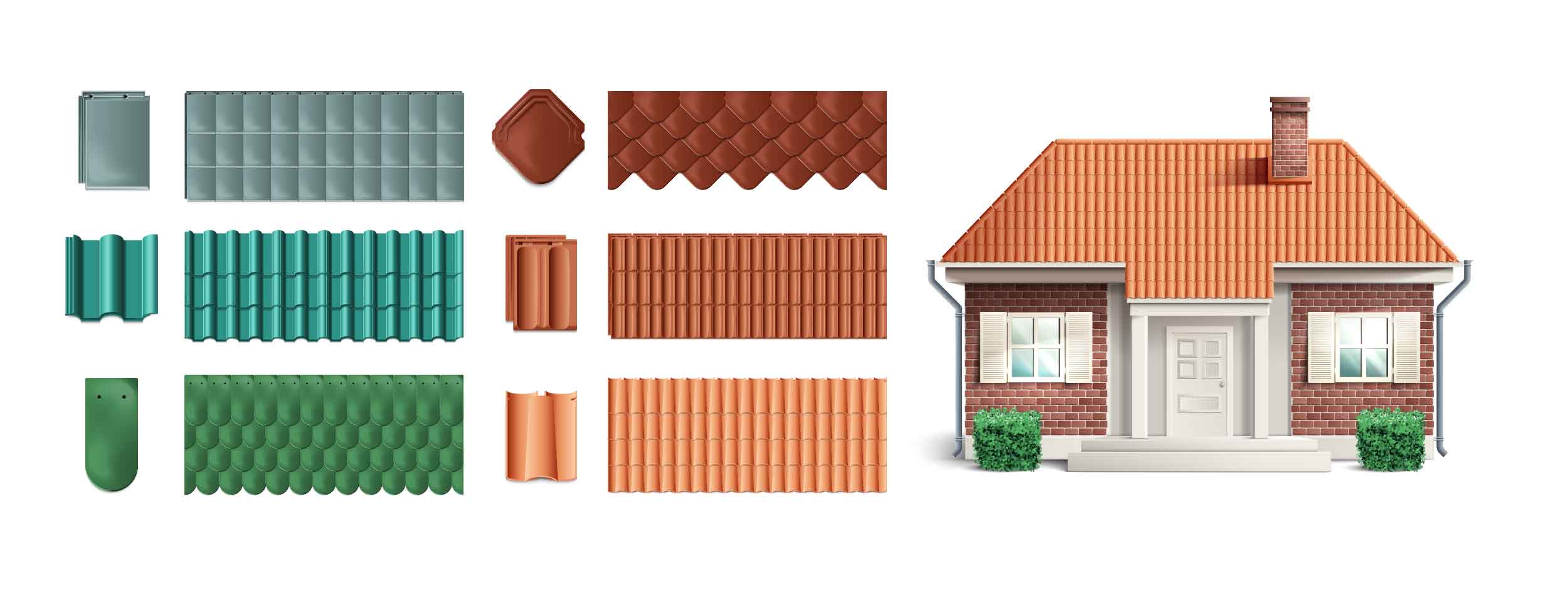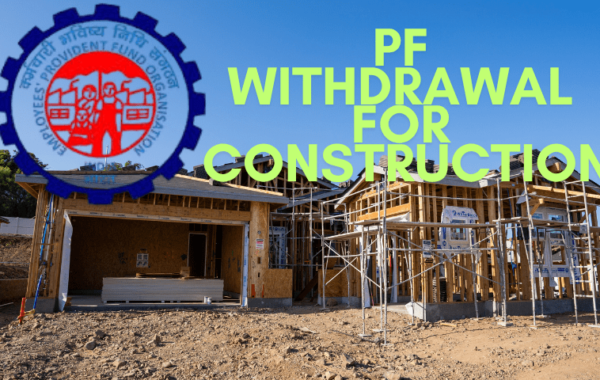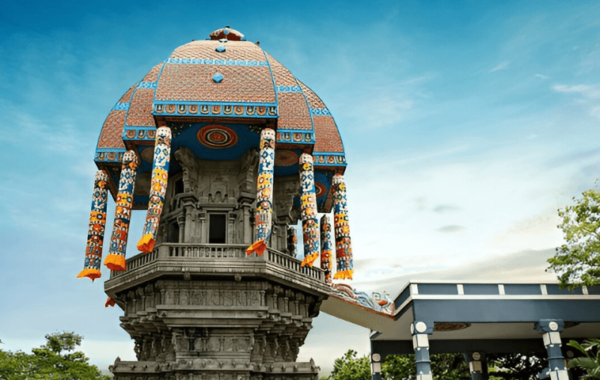
A Beginner’s Guide to Different Types of Roofs
The crucial component of any building is the roof, as we couldn’t even imagine a building without a roof, which provides protection from extreme climates and dust and ensures the safety and comfort of its occupants. The roof safeguards the structure, and each roof design adds its aesthetic appeal and functionality. Choosing the right type of roof is crucial, as tops come in various styles. It will be massive for beginners to understand the different types of roofs and their characteristics. In this blog, a beginner’s guide to Top 3 types of roofs, we will explore various roof types. This blog will explain the types of roofs commonly used in construction and delve into their features, advantages, and considerations.
Here are top 3 types of roofs:
1. Flat Roof:
A flat roof with a nearly horizontal surface is a minimal slope or no slope type of roof. Here are some essential uses and features of flat roofs:
Uses of Flat Roof
You can spot flat roofs in commercial buildings like offices, warehouses, and retail spaces. Ultimately most people choose flat roofs, why because they are cost-efficient and easy to install.
Flat roofs are gaining popularity in modern residential architecture because of its contemporary and also for their minimalist designs.
Flat roofs are cost-efficient as they generally don’t need many materials but also easier and faster to construct.
As we already discussed, we could use the roof space for multi-purpose due to the absence of steep slopes.Thus Turning the area into green roofs, outdoor lounges, or rooftop installations like satellite dishes are always possible.
Flat roofs not only help architects and but also designers who create modern and contemporary designs. Thus, the clean lines and sleek appearance of flat roofs can contribute to a building’s overall aesthetic appeal and architectural style.
Flat roofs can contribute to energy efficiency with proper insulation and reflective materials. Hence they can help reduce heat transfer in hot and cold climates, resulting in potential energy savings for the building.
Waterproofing is vital for flat roofs since they do not naturally shed water like pitched roofs. Proper installation of drainage systems and membranes and regular maintenance are necessary to prevent water pooling, leaks, and also it potential damage.
2. Pitched Roof:
Unlike a flat roof, a steep slope on both sides meets at the central edge of a pitched roof. Here are some critical uses and features of pitched roofs:
Top 3 types of roofs:Uses of Pitched Roofs:
Pitched roofs are Colonial,Tudor, or Victorian-style architecture, offers a traditional and classic appearance commonly found in residential houses.
The angle allows rainwater, snow, and debris to drain quickly, thus preventing water pooling and also helps in reducing the risk of leaks and structural damage.
Utilization of the creation of additional space within the roof structure for storage, converted into living areas, or used for insulation, enhancing the functionality of the building.
Features of Pitched Roofs:
These are symmetrical shape, visible slopes, and gable end create a visually pleasing design that not only adds character but also charm to a building.
Pitched roofs offer better ventilation and air circulation within the attic space, hence it which prevents the buildup of moisture, reduces the risk of mold and mildew, and thus improves overall indoor air quality.
The angled design enables them to withstand high winds, heavy rain, and also snow loads more effectively than flat roofs.
Compared to flat roofs, pitched roofs can also have a longer lifespan when constructed with quality materials and with proper installations.
Classifications of pitched roofs are,
It is also known as a peaked or pitched roof. Gable roofs are triangular in design, with two sloping sides meeting at a ridge.
Hip roofs have slopes on all sides, meeting at a ridge.
Mansard roofs have a double slope on all sides, creating an additional living space or storage area in the attic.
The lower slope on a gambrel roof is steeper than the upper slope, with two different pitches on each side. They are reminiscent of barn-style tops and provide more headroom and living space in the attic.
3. Curved Roofs:
Curved roofs are known for their unique and modern designs. Some notable examples include:
- Barrel Roofs
- Dome Roofs
Top 3 types of roofs: Uses of Curved Roofs:
Curved roofs often create visually striking and innovative designs in modern and contemporary architecture. They add a sense of fluidity, elegance, and uniqueness to the building’s overall aesthetics.
Curved roofs can be found in various commercial structures such as museums, event venues, airports, and exhibition centers. Their eye-catching design can help create a memorable and iconic architectural landmark.
Curved roofs are also commonly seen in specialty structures such as sports stadiums, concert halls, and theaters. The curvature can enhance acoustics and provide unobstructed views for spectators.
Features of Curved Roofs:
Curved roofs are chosen mainly for their aesthetic appeal. Breaking the traditional roof design norms, it provides a visually stunning and contemporary look.
Curved roofs often create attractive interior spaces. The absence of traditional horizontal ceilings can result in higher ceilings or unique room configurations, providing a sense of openness and spaciousness.
The roof’s curvature can enhance the entry of natural light into the building. It allows for more oversized windows or skylights along the curved surface, providing ample daylight and creating a bright and inviting interior.
A green roof, a living or eco-roof, is wholly or partially covered with vegetation and growing medium. Here are some critical uses and features of green roofs:
Uses of Green Roofs:
Green roofs contribute to sustainable development and environmental conservation.
They offer recreation, relaxation, and gardening opportunities, promoting a connection with nature in densely populated areas.
Features of Green Roofs:
The key feature of a green roof is its vegetation. Depending on the roof’s load-bearing capacity, it typically includes a combination of low-maintenance plants, such as sedums, grasses, herbs, or even shrubs and trees. The growing medium, or substrate, provides a supportive base for plant growth.
Green roofs help manage stormwater runoff by absorbing and retaining rainwater—the plants and substrate act as natural filters, reducing the volume and rate of water runoff. Green Roof helps alleviate strain on stormwater infrastructure and reduce the risk of flooding.
Green roofs contribute to various environmental benefits, including reducing greenhouse gas emissions, mitigating the urban heat island effect, and increasing urban biodiversity by providing habitat for insects, birds, and other wildlife.
These are the few prominent types of roofs that have their unique style and provide functionality to the building. Understanding these Top 3 types of roofs is essential for embarking on a building or renovation project. The choice of top not only affects the aesthetic appeal of a structure but also plays a vital role in its functionality, durability, and energy efficiency. We, CIBI+SIMEON Designs, the best architectural and interior designing company in Chennai, create uniquely with our qualified architects and engineers.


